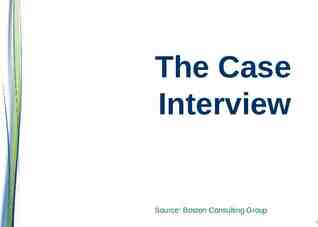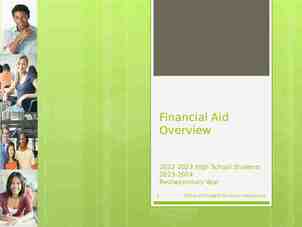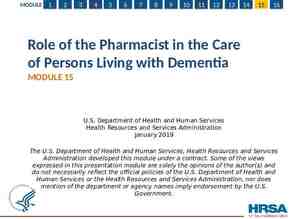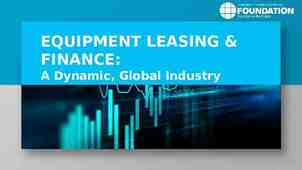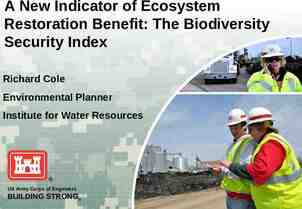Brownfields RLF Webinar Series: Site and Applicant Eligibility Call
25 Slides3.15 MB

Brownfields RLF Webinar Series: Site and Applicant Eligibility Call In: 866-299-3188 / code 202 566 2773 November 5, 2012

Eligible Sites The site must meet the brownfield definition, which is: “.real property, the expansion, redevelopment, or reuse of which may be complicated by the presence or potential presence of a hazardous substance, pollutant, or contaminant.” Abandoned, idled, or underused industrial or commercial properties Reuse/redevelopment is complicated by real or perceived environmental contamination Site and Applicant Eligibility 2

Eligible Sites Before After 3

Eligible Sites Sites with the following contaminants can be eligible for RLF loans and sub-grants: Hazardous substances Petroleum contamination Asbestos & lead based paint Controlled substances (e.g., meth labs) Mine-scarred lands Other contaminants Site and Applicant Eligibility 4

Petroleum Sites State review based on statutory requirements to determine whether the site is: Relative low risk No viable responsible party Applicant not responsible party No RCRA order Site and Applicant Eligibility 5

Properties not considered Brownfields by EPA Listed sites or sites proposed for listing on the National Priorities List (NPL); Sites subject to CERCLA orders or consent decrees; or, Federal properties (except land held in trust for an Indian tribe) Site and Applicant Eligibility 6

Eligible Borrowers and Subgrantees Eligible Sub-grantees Borrowers States Any public or private entity with control or access Local of thegovernments brownfields site Tribes Non-profit organizations Redevelopment agencies Land clearance authorities Other quasi-governmental entities created by state or local governments Gold Hill Mesa Redevelopment, Colorado Springs, Colorado Site and Applicant Eligibility Site and Applicant Eligibility 7

Sub-grantee Eligibility Restrictions Cannot sub-grant to yourself Sub-grantee must own the land For profit organizations are not eligible for sub-grants Max of 200,000 sub-granted per site, and up to 50% of your grant It is ok to pair a 200k cleanup grant and a 200k RLF sub-grant or multiple 200k RLF sub-grants from different RLF grants Site and Applicant Eligibility 8

Eligible Borrower/Subgrantee The borrower/sub-grantee cannot be a potentially liable party under CERCLA 107: Past owner or operator during release of contamination Cause or contributor to contamination Generator or transporter of contamination Voluntary acquisition without All Appropriate Inquiry (AAI) Site and Applicant Eligibility 9

All Appropriate Inquiries (AAI) AAI is the process of evaluating a property for: Potential environmental contamination Potential liability for environmental contamination Requires Phase I environmental site assessment within 6 months (180 days) prior to voluntary acquisition. Also known as: “Environmental due diligence” and “Environmental site assessment standards” ASTM Standard E1527 - 05 AAI Rule available at: www.epa.gov/brownfields.regneg.htm Site and Applicant Eligibility Idalia Court RLF Cleanup, Aurora Colorado 10

Eligible Uses of RLF Funds 1. Site eligibility per CERCLA 104(k) 2. Installation of fences, warning signs, or other security or site control precautions 3. Preparing an Analysis of Brownfields Cleanup Alternatives (ABCA) 4. Ensuring public participation requirements are met including Community Relations Plan 5. Establishing an administrative record for each site 6. Removal of drums, barrels, tanks etc that contain/may contain hazardous substance or petroleum 7. Sampling as related to design/implementation of selected cleanup plan (Confirmatory sampling) 11

Eligible Uses of RLF Funds 8. Developing a Quality Assurance Project Plan (QAPP) 9. Ensuring adequacy of cleanup and overseeing activities to ensure compliance with Federal & State requirements 10. Ensuring site is secure if borrower/subrantee is unable or unwilling to complete cleanup 11. Purchasing environmental insurance 12. Other eligible programmatic costs 13. Subgrantee progress reporting *Others. Always check with your EPA Project Officer! 12

Ineligible Uses of RLF Funds Funds cannot be used for: 1. Pre-cleanup assessment activities (Phase I & II) 2. Monitoring and data collection for permits under federal or state laws unless required by cleanup 3. Non-cleanup related construction, demolition, development and addressing deteriorated drinking water supplies 4. Job training unrelated to site cleanup 5. Paying a penalty or fine 6. Meeting a federal cost share requirement unless allowed by statutory authority 7. Paying a response cost at a site where the recipient of a loan or subgrant is liable under CERCLA 107 8. Paying a cost of compliance with any federal law not applicable to the cleanup 13

Ineligible Use of RLF Funds Administrative costs and all indirect costs under OMB Circulars are prohibited Ineligible administrative costs are salaries, benefits, contractual costs, supplies and data processing charges incurred to comply with Uniform Administrative Requirements for Grants in 40 CFR Part 30 or Part 31 and direct costs for grant and subgrant administration not identified in eligible costs See T&C for list of ineligible grant or subgrant administration costs 14

Eligibility Exercises Scenario #1 10 acre former 1920s papermill site, no NHPA designation The site is contaminated w/ a mixture of cinders, ash, sludge residue, heavy metals and PCBs Cleanup plan calls for on-site consolidation and management of materials through a combination of engineering controls (road ROWs and greenspace) Planned end use of the site is single family homes. Groundwater, though impacted, will not impede the reuse of the site as homes will be connected to city municipal system Cleanup costs are estimated at approximately 850,000 and the RLF grantee executes a hazardous substance loan with the developer as the borrower Are the following activities authorized by the grantee eligible? 1. Loan funds are used to finalize the cleanup plan for review and approval by the State’s Voluntary Cleanup Program (VCP). The VCP requires additional sampling to fill in data gaps and one additional round of groundwater sampling to confirm that previously documented releases to groundwater have not significantly changed. The borrower uses loan funds to undertake the additional sampling required by the VCP. ANSWER: if a few additional samples needed than it is an eligible expense. 15

Eligibility Exercises Scenario #1 (contd) - Are the following activities authorized by the grantee eligible? 2. Several “hot spots” were identified during the assessment work located outside the main area requiring cleanup. These hot spots also require excavation. The borrower authorizes the use of loan funds to undertake some limited “step out” sampling of each hot spot to more fully delineate theses areas. This will better enable the borrower’s consultant to develop more detailed bid specifications. ANSWER: this is cleanup planning. It was already assessed, we just need to delineate what it was to make proper parameters for the bid. 3. During preparation of the bid specifications for cleanup, and upon reviewing additional historical information on the site, the borrower’s consultant identifies an area of concern on a portion of the site that had not previously been characterized. The borrower authorizes its consultant to use loan funds to characterize soil and groundwater in this additional area of concern. ANSWER: Ineligible – it would be assessment and would not be allowed. Key is “has not previously been characterized.” 4. Cleanup has started and is ongoing. Soil confirmation sampling is showing that the area requiring excavation is larger than originally defined. Contamination extends beneath the outbuildings that remain from the historical industrial operations. The contractor consults with the borrower and authorization is given to use loan funds to remove the buildings. ANSWER: Eligible - if there’s enough to cover extra costs they have to remove the buildings to get to contaminated soil. 5. The VCP charges fees for document review including: 1) the draft cleanup plan and cleanup completion report; 2) cleanup oversight; and 3) issuance of a Certificate of 16

Eligibility Exercises Scenario #2 The City of Rivertown, South Dakota was awarded a 1,000,000 ( 600,000 hazardous substance and 400,000 petroleum) EPA RLF grant in 2011 and has not yet made a loan. A local non-profit called Rivertown Stewards wants to cleanup a scrap yard site along the Missouri river and convert into a park with recreational trails. The site is owned by Recyclers Inc, which operated the scrap yard for 25 years. The company just filed for bankruptcy and has agreed to allow Rivertown Stewards to cleanup the site and convert it to parks and trails. The company would sell the land to Rivertown Stewards, but the non-profit is uncertain about taking ownership of a dirty site. A year and a half ago, Rivertown Stewards used a Targeted Brownfields Assessment (TBA) to conduct a Phase 1 and 2 assessment and the results showed elevated levels of PCE contamination on the site. There is no state or federal enforcement action and the site is not on the National Priorities List (NPL). Estimated cleanup costs are at 700,000. John Helphand, RLF fund manager from the City, thinks he could use the City’s RLF and give a 700,000 subgrant to the non-profit for the entire cleanup. Is he right? Why/why not? If not, what could John or the non-profit do to get the site cleaned up? ANSWERS ON NEXT SLIDE 17

Eligibility Exercises Possible answers for Scenario #2 The City cannot give a subgrant to the city for 700,000 – this amount exceeds the subgrant limit of 200,000, and a grantee can only subgrant 50% of its budget. The City only has 600,000 of hazardous substance funds (no petroleum on this site). To get the site cleaned, one option is for the non-profit to update its phase 1 to purchase the property (and meet AAI requirements) and then they would be eligible for a loan for the cleanup, providing it has adequate financial resources to payback the loan. Or they could get a 200,000 subgrant and combine it with a loan for the remaining portion. For the subgrant to work, the non-profit would need to take ownership and do AAI to acquire the property and assert BFFP status. Alternatively, the City could acquire the property and conduct the cleanup (and loan to itself). The City also should know that by sugranting, it is depleting its RLF and diminishing the long term ability to make loans and cleanup sites. Could consider a subgrant/loan split and then a loan for the rest. Could also apply for a cleanup grant. The City should also call its EPA PO to discuss the site and applicant eligibility. 18

Eligibility Exercises Scenario #3 Sustainable Ventures, LLC is a redevelopment company based in Nice City, Utah. Linda Green, the company’s Acquisitions Director recently purchased a brownfield site on the North end of Nice City that is contaminated with arsenic, lead and petroleum. Sustainable Ventures would like to cleanup the contamination and then construct a LEED certified mixed commercial, residential and open space redevelopment. Linda Green heard that Nice City has a fund available to make lowinterest loans or subgrants for cleanup projects and she decides to call to learn more. As the RLF Manager for Nice City, what are you going to ask to determine if the site and potential applicant are eligible? ANSWERS ON NEXT SLIDE 19

Eligibility Exercises Possible answers for Scenario #3 As an RLF manager, it’s common to get a call from someone who says “I’ve heard about your fund and I have a possible cleanup project, and let’s talk to see if this could work.” So, as RLF manager you need to get some more information and you want to ask: Has a phase 1 or phase 2 been established? Is the site part of the State Voluntary Cleanup Program? Is the site on a CERCLA list or a National Priorities List or is there a state or federal enforcement action”? Did you conduct your AAI within 180 days prior to purchase? When did they buy it? Is Sustainable Ventures affiliated with the responsible party? Is the petroleum commingled with the hazardous substances? If petroleum is present, has the state determined the site to be eligible? What do they want to use the RLF funds for? (i.e., make sure it’s cleanup related) Is there an interested private developer? (Just need to have control of the site, don’t have to own it) Davis-Bacon – will you use prevailing wage on the project? Once you get this information, a good next step for the RLF Manager is to call your PO to discuss eligibility and then meet with the potential borrower to discuss the application process. 20

“Stump The EPA” Real Life Eligibility Questions from Grantees Q: A non-profit CDC forms a Limited Dividend Housing Association Limited Partnership (LDHALP), the members of which are the non-profit CDC, a non-profit housing organization and a tax credit investor. The LDHALP is a for profit entity. The project includes low/moderate income housing and the funding mechanisms are Low-Income Housing Tax Credits and New Markets Tax Credits, thus the need for the tax credit investor partner. Would this scenario be eligible for a sub-grant? If the LDHALP is not eligible, could we make a sub-grant to one of the non-profits who have an interest in the property and are eligible to receive a sub-grant? ANSWER: The nonprofit incorporated themselves so they are a for-profit agency and wouldn’t be eligible. Suggestion to update a Phase I, transfer site to nonprofit and then once cleanup is done transfer back to for-profit group to ensure they retain their credits. 21

“Stump The EPA” Real Life Eligibility Questions from Grantees 2. Q: Say the City of Bozeman built its City Hall in 1920 with asbestos and lead-based paint. Can the City receive a loan for cleanup so they can expand and renovate the building? ANSWER: The answer is yes as long as long as the asbestos and lead-based paint haven't been released to the outside environment. The windows, doors, walls and roof need to be fully intact to show the contaminants have no way of being released. When there is no release to the outside environment, CERCLA liability hasn't been triggered. So, in this case we're able to lend/grant funds even though the borrower is responsible for having the asbestos installed in the first place. 3. Q: Can a site which has been contaminated with PCBs as a result of a cutting/coating oil operation qualify for a RLF petroleum subgrant or loan? The remediation would consist of institutional controls. ANSWER: It depends. If there is trace amounts of PCB associated with the oily residue of a cutting/coating operation than this could be an eligible petroleum site. The state will be a big factor here on whether the state thinks it’s a petroleum site. Is it a low-priority for the state? Will they make EPA make the determination? This is information you’ll need to factor into your decision. 22

“Stump The EPA” Real Life Eligibility Questions from Grantees 4.Q: What is an intragovernmental loan? What are the requirements that a recipient must meet to be eligible for an intragovernmental loan? ANSWER: An intragovernmental loan is when an RLF grantee loans to another arm of the city or state. the recipient is the same entity, so they can’t be a PRP and would have had to acquire the property appropriately. Don’t have to own property if loan, just need access to it. So at state level could go to an arm of the state such as Transportation Department. Cities may go to housing authority or parks department. 23

Brownfields Conference 2013 Please join us at the 2013 Brownfields Conference in Atlanta, May 15-17! This training conference is an eligible cost under your RLF grant and will feature additional RLF sessions 24

Contacts For questions about this webinar please contact your RLF Project Officer This webinar will be posted here: http://www.epa.gov/brownfields/rlflst.h tm 25

